
All categories
Featured selections
Trade Assurance
Buyer Central
Help Center
Get the app
Become a supplier

(737 products available)








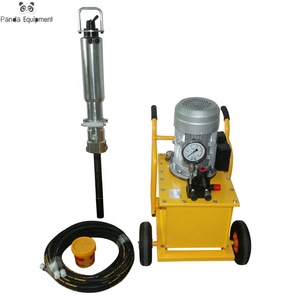



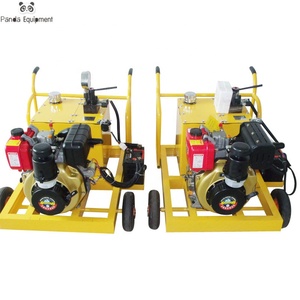


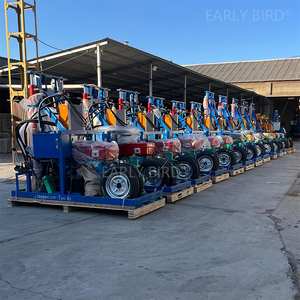






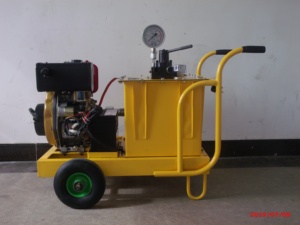


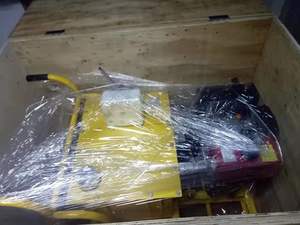



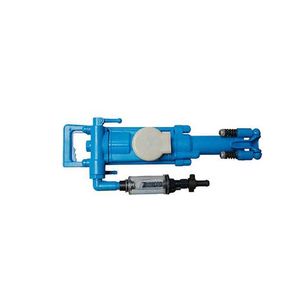




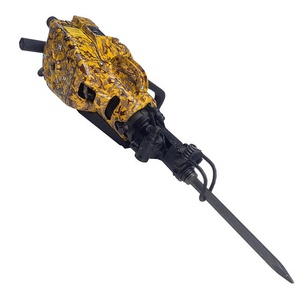




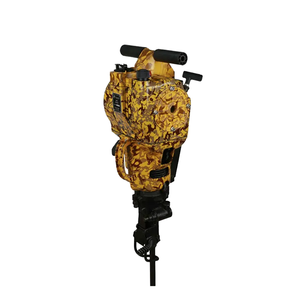

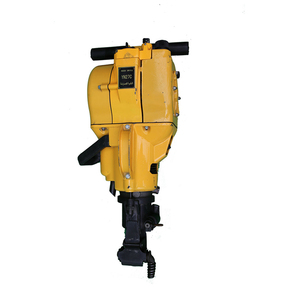



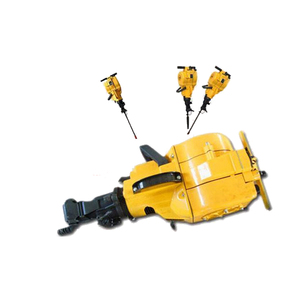
An Internal Combustion Rock Drill, also known as the pneumatic rock drill, is a versatile tool powered by compressed air to bore into hard rock formations and create holes for different purposes such as mining, construction, quarried, and excavation.
The classic internal combustion rock drills are classified according to their mounting style, feed mechanism, hole diameter, drilling direction, power source, and application.
Mounting Style
Hand-held/Portable Drills:
Typically, the rock drill is designed to be easily operated by a single person. These drills are relatively small, lightweight, and versatile, making them ideal for various applications that require easy transport and maneuverability. They are commonly used for mining, construction, or maintenance tasks where access to power sources may be limited.
Walk-behind Drills:
These types of rock drills are designed to be operated by walking behind the machine as it drills. Walk-behind drills typically have handles or a frame for the operator to guide the drill while walking behind it. They are often used for horizontal drilling, such as drilling utility lines or holes for foundations.
Ride-on Drills:
Ride-on rock drills are larger, more robust versions of walk-behind drills, designed to be operated by sitting on the machine as it drills. They often have a platform or seat for the operator to control the drill while riding on it. Ride-on drills are commonly used in large-scale construction or paving projects where the operator needs to have more control over the drill's direction and drilling speed.
Wheeled Drills:
Wheeled rock drills are typically equipped with wheels for easier transportation to the job site. They often have a trailer or hitch for towing behind a vehicle. Wheeled drills are commonly used in infrastructure projects, road construction, or utility line installation where mobility between locations is important.
Tracked Drills:
These types of rock drills are mounted on tracks for improved stability and maneuverability in rough terrain. Tracked drills are often used in mining, excavation, or site preparation where access to the drilling location may be difficult due to uneven ground or slopes.
Feed Mechanism
Pull Feed Drills:
Pull feed rock drills are designed to be fed into the drilling surface by pulling them towards the operator. This type of feed system is often used in handheld or lightweight drills where the operator has more control over the feed rate and direction of drilling.
Through the Operator Controlled Feed System:
Operator-controlled feed rock drills are equipped with a feed mechanism that is controlled by the operator. The operator can adjust the feed rate and direction of drilling by operating the drill's controls. This type of feed system provides a flexible and precise feeding option for drilling in different rock formations.
Hole Diameter
Small Hole Drills:
Small hole rock drills are designed to drill narrow diameter holes in rocks or other hard materials. These types of drills are typically used for making small, precise, and closely spaced drill holes for exploration, blasting, or sampling purposes.
Medium Hole Drills:
Medium hole diameter rock drills can create holes of intermediate sizes in rocks or other hard materials. These types of drills are often used for drilling holes for anchors, dowels, or utility line installation in foundation or road construction projects.
Large Hole Drills:
Large hole rock drills are designed to create wide diameter holes in rocks or other hard materials. These types of drills are commonly used in heavy construction, mining, or oil and gas exploration where large diameter holes are needed for drilling boreholes, wells, or shaft construction.
Drilling Direction
Horizontal Rock Drills:
Horizontal rock drills are designed to drill horizontally through the ground or into an underground space. These types of drills are commonly used in utility line installation, tunneling, or horizontal directional drilling for trenchless pipeline construction or repair.
Angle Drills:
Angle rock drills are equipped with a feed mechanism that allows the drill to be tilted at different angles for drilling in various directions. This type of drill is often used in mining or excavation where angled or deviated drill holes are required for access to mineral deposits or underground cavities.
Vertical Drills:
Vertical rock drills are designed to drill straight down into the ground or up into the ceiling or overhead space. These types of drills are commonly used in foundation drilling, geotechnical exploration, or anchor drilling for constructing stability in slope and landslide areas.
Power Source
Electric Drills:
Electric rock drills are powered by electricity, either from a corded power source or a rechargeable battery. These types of drills are typically quieter and produce less vibration than pneumatic or hydraulic drills, making them more suitable for use in residential or urban areas where noise restrictions may apply.
Pneumatic Drills:
Pneumatic rock drills are powered by compressed air. These types of drills are often used in construction, mining, or demolition applications where high impact energy and drilling speed are required. Pneumatic drills typically have a higher power-to-weight ratio than electric drills.
Diesel/Retractable Drills:
Diesel rock drills are powered by diesel fuel, providing a higher torque and drilling capacity than electric or pneumatic drills. These types of drills are designed for heavy-duty applications in mining, construction, or rescue operations where drilling through hard rock or dense material is required.
Application
Mining Drills:
Mining rock drills are specifically designed for use in mining operations to drill blast holes or production holes in the ground. These types of drills are typically equipped with a rotating drill bit and a feed mechanism that allows the drill bit to penetrate deep into the ground or rock formation to extract mineral deposits or ore.
Construction Drills:
Construction rock drills are designed for use in construction projects to drill holes for anchors, dowels, or utility line installation in foundation or road construction. These types of drills are often equipped with a carbide-tipped drill bit and a feed mechanism that is controlled by the operator for precision drilling in concrete or asphalt materials.
Quarry Drills:
Quarry rock drills are specifically designed for use in quarrying operations to drill holes for extracting stone or rock materials from the ground. These types of drills are typically equipped with a diamond-tipped drill bit and a feed mechanism that allows the drill to penetrate deep into the ground or rock formation to extract stone or rock materials for construction or decorative purposes.
Technical features of the internal combustion drill are as follows:
The maintenance of internal combustion rock drills is very important. It not only prolongs the service life of the equipment but also ensures its normal operation and drilling quality. The following are some internal rock drill maintenance suggestions for reference.
The applications of an internal combustion rock drill are countless in industries that require drilling rocks.
Mines
The internal combustion rock drill creates tunnels for new excavations. It also aids in optimizing existing mine configurations to enhance mineral extraction.
Tunneling projects
Using air or water as a medium for power transmission, the internal combustion rock drill has revolutionized tunneling, enabling the construction of critical infrastructure such as transportation networks, hydroelectric tunnels, and utility corridors.
Quarrying operations
The internal combustion rock drill is indispensable in quarrying operations. It allows for the extraction of high-value stone and granite with precision and efficiency, ensuring the sustainability of quarrying activities.
Construction projects
Using the internal combustion rock drill can expedite the construction of foundations, roadways, and structural elements in rock strata through the rapid establishment of anchor holes, expansion joints, and drainage holes.
Geothermal and oil drilling
In the pursuit of sustainable energy sources and petroleum extraction, the internal combustion rock drill plays a pivotal role in the drilling of geothermal wells and oil wells, respectively, thus contributing to global energy security.
Demolition projects
Via controlled, strategic drilling, the internal combustion rock drill can facilitate demolition operations by weakening rock formations or reducing the volume of unwanted rock outcrops.
Drilling technical holes
With high precision, the internal combustion rock drill enables the drilling of technical holes, including test holes and blast holes, in various rock formations, thereby facilitating geotechnical investigations and blasting operations.
Soil-nailing projects
Soil-nailing projects to improve slope stability or construct retaining structures can also use the internal combustion rock drill. It simplifies the drilling of holes for soil nails or stress-reducing anchors in rocky or soils.
Planned geo-exploratory drilling
In planned geo-exploratory drilling, the internal combustion rock drill can be used to establish boreholes for geological surveys, mapping subsurface formations. The drill is also used to collect rock samples and assess hydrological conditions.
Drilling dewatering wells
In the drilling of dewatering wells, the internal combustion rock drill can be employed to develop wells that facilitate the extraction of groundwater, thereby mitigating water influx in mining and construction activities.
Drilling micro-piles
The internal combustion rock drill can be utilized to create intricate micro-pile networks, thus providing load-bearing support for infrastructural developments like bridges, edifices, and slope stabilizations.
When choosing a type of rock drill, it is important to consider the ease of use of the drill, its efficacy, and the level of safety it can provide to the user. With these in mind, buyers of internal combustion rock drills should take a close look at the following features before purchasing the drill.
Control
By investing in a drill that has easily manageable controls, operators can use it efficiently, improving overall productivity. Look for drills with user-friendly controls and intuitive features.
Comfort
Choose a drill that provides fatigue relief features, such as anti-vibration technology and ergonomic handles. Such a drill can help ensure comfort in prolonged use, thus boosting productivity.
Universal Joint
A rock drill that has a universal joint improves drilling precision while also allowing for easy maintenance. This helps greatly enhance control and flexibility during operation.
Depth Gauge
This built-in gauge helps drill operators have better depth control and consistency. It can also increase drilling precision, thereby resulting in greater repeated success with drilling outcomes.
Cooling System
A good internal cooling system or air cooling ensures that the rock drill machine can work efficiently even under extreme temperatures. This helps prevent overheating and ensures a longer service life.
Operator Safety
Drills with operator safety features like emergency stop buttons and spark arresters are essential. These features protect the operator and also promote safe use in various environments.
By placing emphasis on these crucial internal rock drill features, buyers can select a drill that offers optimal performance, user comfort, safety, and efficiency in a wide range of drilling applications.
Q1: What is the working principle of an internal combustion rock drill?
A1: The internal combustion rock drill uses an air-gas mixture for ignition. It draws the air-gas mixture into the cylinder, where it compresses and ignites it through a spark plug. The combustion generates high-pressure gas that moves the piston back and forth. This rotational movement drives the drill bit to break rocks.
Q2: What are the advantages of internal combustion rock drills?
A2: Internal combustion rock drills offer flexibility and mobility due to the absence of external power source requirements. They excel in remote locations and rugged terrains. Their high drilling speed and efficiency make them widely applicable in mining, quarrying, and construction.
Q3: What are the types of internal combustion rock drills?
A3: Internal combustion rock drills can be classified into three types. The first one is a hand-held rock drill operated by the manual powers. The second one is the pneumatic rock drill which works similarly to a hand-held drill but is powered by compressed air. The third one is the machine-mounted drills fixed in place for automated drilling.
Q4: How to choose an internal combustion rock drill?
A4: When choosing an internal combustion rock drill, consider the drill size and weight. Higher power and efficiency are also important. Power sources should also be considered, such as gasoline engines or diesel engines. The working environment will also influence the choice, such as temperature, humidity, and the presence of flammable substances. Noise and vibration control are also crucial. Internal drills generally produce high noise and vibration during operation.